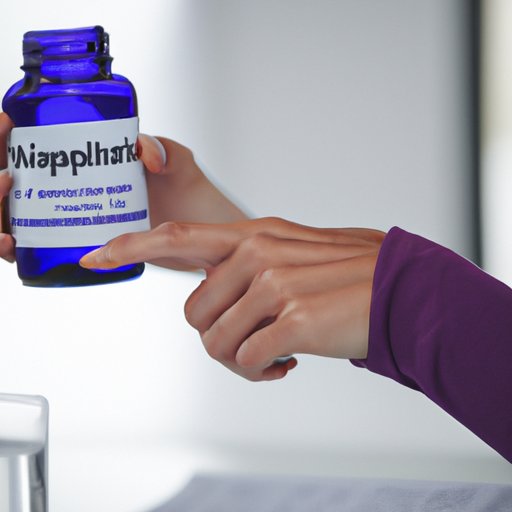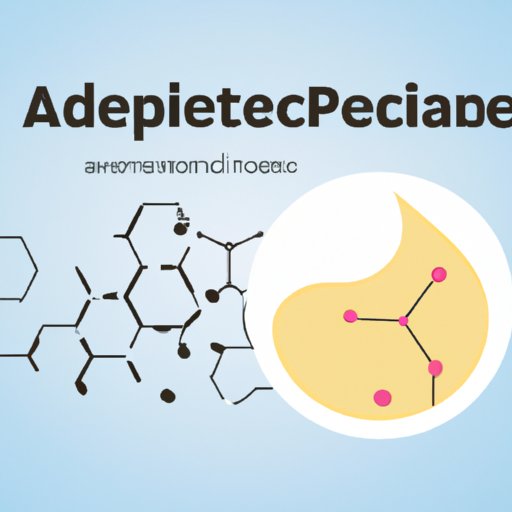Introduction
Acne is an incredibly common skin condition that affects millions of people across the world. For many, over-the-counter (OTC) treatments can be effective in managing mild cases of acne. However, for those with moderate to severe acne, a prescription medication may be necessary. One such medication is adapalene, a topical retinoid commonly prescribed by dermatologists.
So, what exactly is adapalene and how does it work? In this article, we’ll explore the science behind this powerful acne treatment. We’ll take a look at the benefits of using adapalene, as well as any potential side effects. We’ll also consider how long it takes for adapalene to work, how often it should be used, and the various forms it comes in.
Explaining the Science Behind How Adapalene Works
Adapalene is a type of retinoid, a class of chemical compounds related to Vitamin A. The active ingredient in adapalene is a synthetic compound called adapalene. It works by binding to certain receptors in the skin, which helps regulate the activity of skin cells and reduce inflammation. As a result, adapalene is able to reduce the formation of blackheads and whiteheads, as well as unclog pores that have become blocked with excess sebum and dead skin cells.
Adapalene has been found to be particularly effective against inflammatory acne, such as papules and pustules. It works by reducing the production of sebum, which reduces the levels of bacteria on the skin and prevents further breakouts. In addition, adapalene can help improve skin tone, reduce redness and swelling, and promote healing of existing acne lesions.

Analyzing the Benefits of Using Adapalene
One of the biggest benefits of using adapalene is its ability to reduce inflammation and swelling. By regulating the activity of skin cells, adapalene is able to reduce the appearance of redness and irritation caused by acne. In addition, adapalene can help unclog pores that have become blocked with excess sebum and dead skin cells. This can help prevent future breakouts and promote clearer, healthier-looking skin.
Another benefit of using adapalene is its ability to improve skin tone. Over time, adapalene can reduce the appearance of dark spots and discoloration caused by acne. This can help even out skin tone and give your complexion a brighter, more youthful glow.
Comparing Adapalene to Other Acne Treatments
When it comes to treating acne, there are several options available. OTC topicals, such as benzoyl peroxide and salicylic acid, can be effective in managing mild cases of acne. However, for those with moderate to severe acne, a prescription medication may be necessary. In this case, adapalene may be a better option than other topical treatments, as it is more effective at reducing inflammation and unclogging pores.
In addition, adapalene is generally considered to be safer than oral medications, such as antibiotics. While antibiotics can be effective in treating acne, they can also lead to antibiotic resistance and other serious side effects. Therefore, adapalene may be a better choice for those looking for a more gentle and effective treatment.

Examining Potential Side Effects of Adapalene
Like any medication, adapalene may cause some side effects. Common side effects include dry skin, redness, burning or stinging sensation, and peeling or flaking of the skin. In most cases, these side effects are mild and should subside within a few weeks of starting treatment. However, if any of these side effects persist or worsen, it’s important to speak to your doctor.
Investigating How Long it Takes for Adapalene to Work
It’s important to note that adapalene is not an overnight solution. Depending on the severity of your acne, it can take anywhere from 4 to 8 weeks before you start to see results. Factors that can affect treatment time include the frequency of use, the length of treatment, and the type of acne you have.
Once you start to see results, it’s important to continue using adapalene as directed by your doctor. Doing so will help maintain your results and prevent future breakouts. In general, results should last as long as you continue to use the medication.

Reviewing the Different Forms of Adapalene
Adapalene comes in three different forms: gel, cream, and ointment. Each form has its own advantages and disadvantages. Gel forms of adapalene tend to be less irritating and easier to apply, while cream forms may be more moisturizing. Ointment forms are thicker and may be better suited for those with very dry skin.

Looking at How Often Adapalene Should be Used
Adapalene should be used as directed by your doctor. Generally speaking, it should be applied once daily, preferably at night. Depending on the severity of your acne, your doctor may recommend increasing the frequency of use up to twice daily. When applying adapalene, it’s important to avoid contact with the eyes, lips, and other sensitive areas of the face.
The length of treatment depends on the severity of your acne and the response to treatment. In most cases, treatment should continue until your acne is under control. If you stop using adapalene too soon, your acne may return.
Conclusion
Adapalene is a powerful and effective acne treatment. It works by binding to certain receptors in the skin, which helps regulate the activity of skin cells and reduce inflammation. As a result, adapalene is able to reduce the formation of blackheads and whiteheads, as well as unclog pores that have become blocked with excess sebum and dead skin cells.
Adapalene has been found to be particularly effective against inflammatory acne, such as papules and pustules. It can also help improve skin tone, reduce redness and swelling, and promote healing of existing acne lesions. Overall, adapalene is a safe and effective treatment for those with moderate to severe acne.
(Note: Is this article not meeting your expectations? Do you have knowledge or insights to share? Unlock new opportunities and expand your reach by joining our authors team. Click Registration to join us and share your expertise with our readers.)
